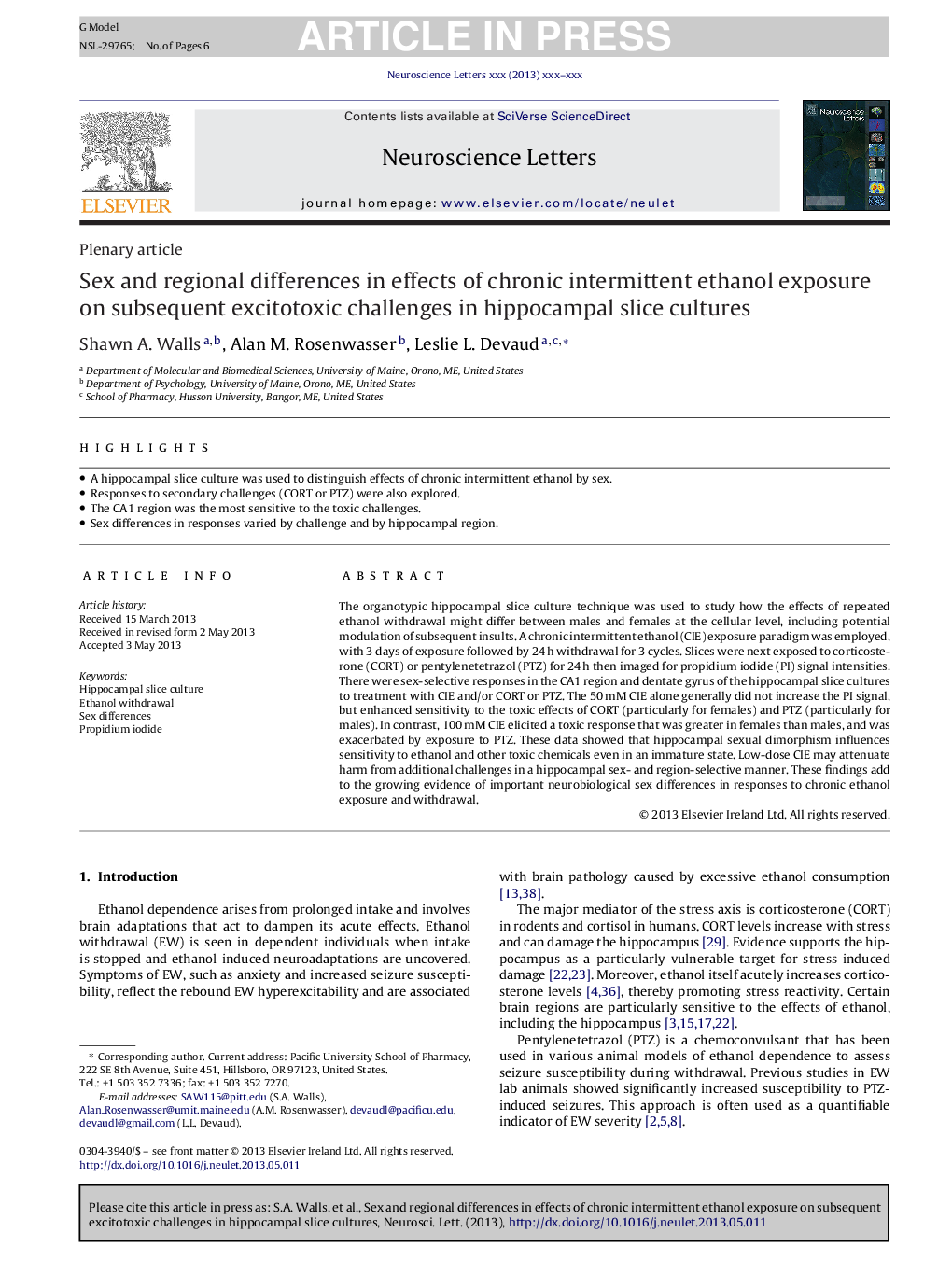| Article ID | Journal | Published Year | Pages | File Type |
|---|---|---|---|---|
| 6282853 | Neuroscience Letters | 2013 | 6 Pages |
Abstract
The organotypic hippocampal slice culture technique was used to study how the effects of repeated ethanol withdrawal might differ between males and females at the cellular level, including potential modulation of subsequent insults. A chronic intermittent ethanol (CIE) exposure paradigm was employed, with 3 days of exposure followed by 24Â h withdrawal for 3 cycles. Slices were next exposed to corticosterone (CORT) or pentylenetetrazol (PTZ) for 24Â h then imaged for propidium iodide (PI) signal intensities. There were sex-selective responses in the CA1 region and dentate gyrus of the hippocampal slice cultures to treatment with CIE and/or CORT or PTZ. The 50Â mM CIE alone generally did not increase the PI signal, but enhanced sensitivity to the toxic effects of CORT (particularly for females) and PTZ (particularly for males). In contrast, 100Â mM CIE elicited a toxic response that was greater in females than males, and was exacerbated by exposure to PTZ. These data showed that hippocampal sexual dimorphism influences sensitivity to ethanol and other toxic chemicals even in an immature state. Low-dose CIE may attenuate harm from additional challenges in a hippocampal sex- and region-selective manner. These findings add to the growing evidence of important neurobiological sex differences in responses to chronic ethanol exposure and withdrawal.
Related Topics
Life Sciences
Neuroscience
Neuroscience (General)
Authors
Shawn A. Walls, Alan M. Rosenwasser, Leslie L. Devaud,
